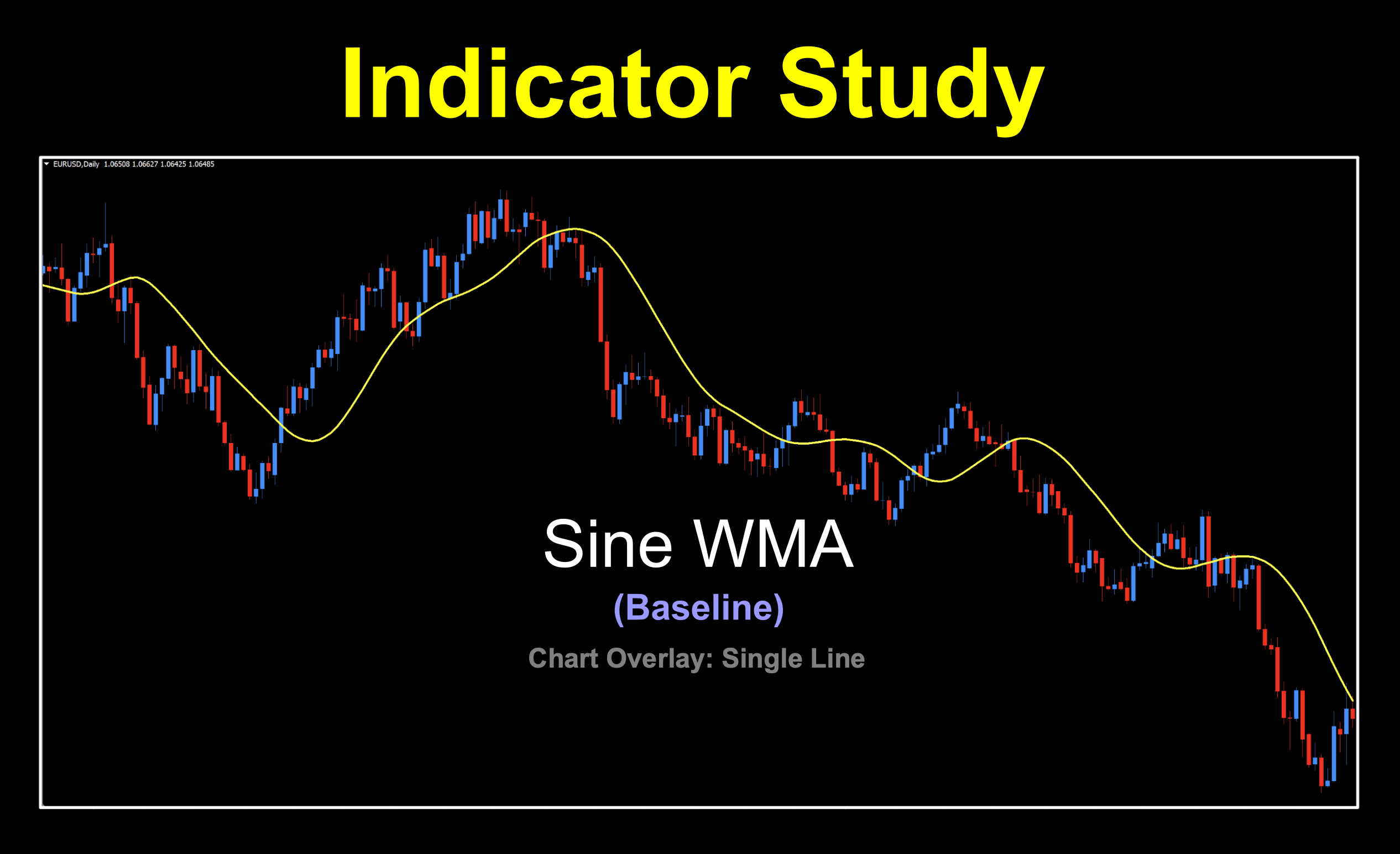What’s Your Sign?
Looking to the heavens to try to get an edge based on the positions of the planets and stars might be a thing for some, but for us, it’s totally head down and looking at the charts.
Junior Year
We’ve got a little something that is strictly math based without any esoteric far out kind of imagery. What that means is that this week’s baseline indicator comes from something you may have come across in high school math and/or physics; the sine of a number.
Triangles, again…
Granted, in its purist form, sine is a trigonometric function defined as the ratio of the side of the angle opposite the angle divided by the hypotenuse. So, something to do with triangles and wavelengths. Cool. Means little to us.
Ah-ha!
But, in our world, a really innovative guy named Patrick Lafferty came up with the SineWMA, or simply SWMA in 1999 and the indicator we’re using is from 2016. It’s short for Sine Weighed Moving Average, if you’re wondering. It takes its weighting from the first half of a Sine wave cycle and accordingly, the most weighting is given to the data in the middle of the data set.
Math for Smarties
The formula for this indicator looks something like this;

Looks Good
Below is the default chart with the stock color. We did fatten it up so it’s easier to see, naturally…but at first glance, it seems to do a pretty good job.
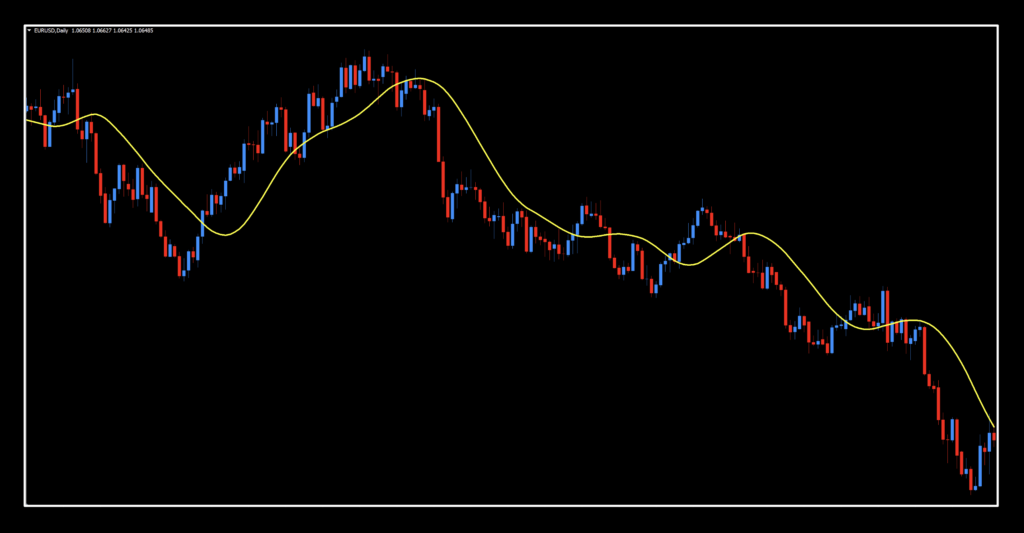
Settings
It’s only got two, and they’re both simple and familiar, which is kind of nice when things get complicated around you.

Length: The number of periods the calculations look back for overall calculations. The default setting is 20.
Price: The price data set used for the internal calculations. Choices are 0-Close, 1-Open, 2-High, 3-Low, 4-Median, 5-Typical, 6-Weighted. The default value is 0-Close.
How we Use it
One of three actions need to happen in the last 30 minutes prior to the close of the trading day. They are; opening, maintaining, or closing, a position. This is when you make your trading decisions, and not actually wait for the close at 1700 EST, because we trade on the daily time frame.
Long: When price crosses above the signal line. Entry is in the last 30 minutes of the trading day.
Short: When price crosses below the signal line. Entry is in the last 30 minutes of the trading day.
Mark it up
So, we’ll do our customary mark up and see where the signals are.
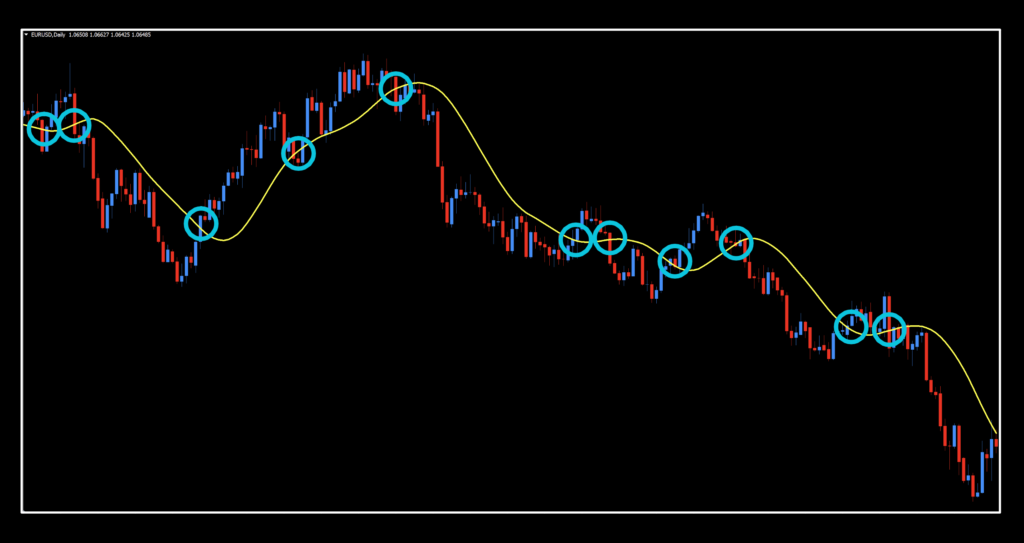
Barring a few flat spots where multiple signals happen (and comes as no surprise), it does a pretty good job calling out those nice longer trends, even on the default settings. We’ll see how it does a little later.
“Dater” (if you’re from L.I.C., Queens)
If you’re new to these studies, we recommend looking at some older blogs to understand how we conduct our testing. Below is the data from our testing.
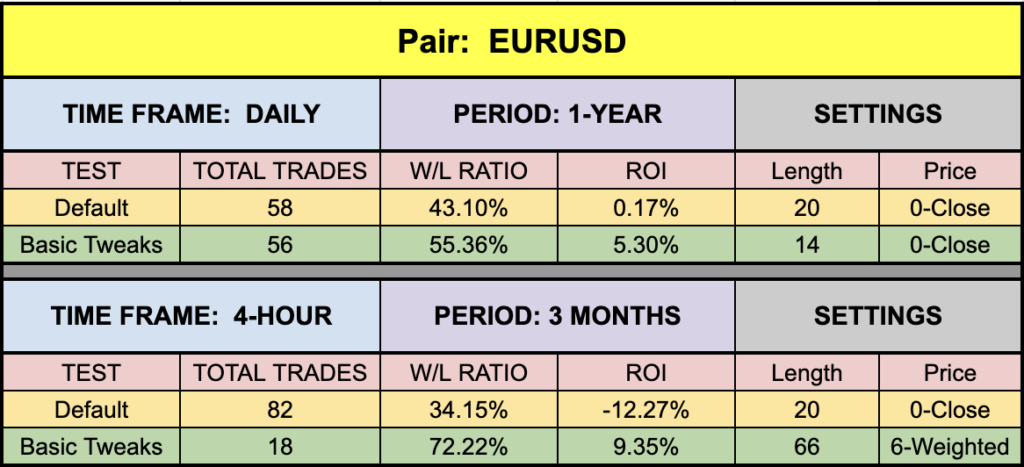
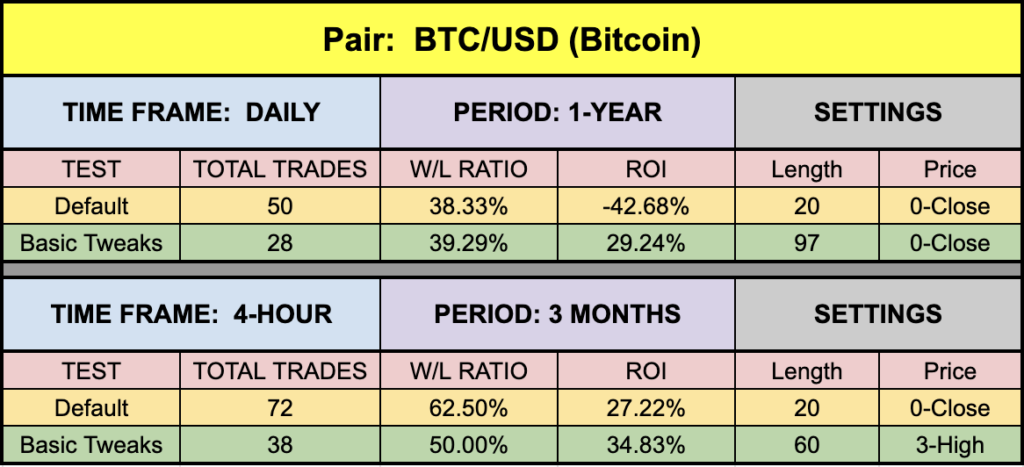


Impressive
The results when we were testing were all over the place. Some iterations had very high numbers and some were very low. This tells you that the indicator has some pretty good flexibility in varying markets. EUR and SPX500 posted results in the nominally expected range, but XAU and BTC had some really stunning results, if you can lock in some good settings. One to take out and kick around, for sure.
Resources
You can get the indicator from the on-line library at no cost to you, HERE. Also, be sure to subscribe to the Stonehill Forex YouTube channel for the technical analysis videos. Sign up for the Advanced NNFX Course HERE.
Our only goal is to make you a better trader.
*Our published testing results are based on money management strategies employed by the NNFX system and depend on varying external factors, which may be different between individuals and their specific broker conditions. No guarantee, trading recommendations, or other market suggestions are implied. Your results and subsequent trading activities are solely your own responsibility.
BTW — Any information communicated by Stonehill Forex Limited is solely for educational purposes. The information contained within the courses and on the website neither constitutes investment advice nor a general recommendation on investments. It is not intended to be and should not be interpreted as investment advice or a general recommendation on investment. Any person who places trades, orders or makes other types of trades and investments etc. is responsible for their own investment decisions and does so at their own risk. It is recommended that any person taking investment decisions consults with an independent financial advisor. Stonehill Forex Limited training courses and blogs are for educational purposes only, not a financial advisory service, and does not give financial advice or make general recommendations on investment.

